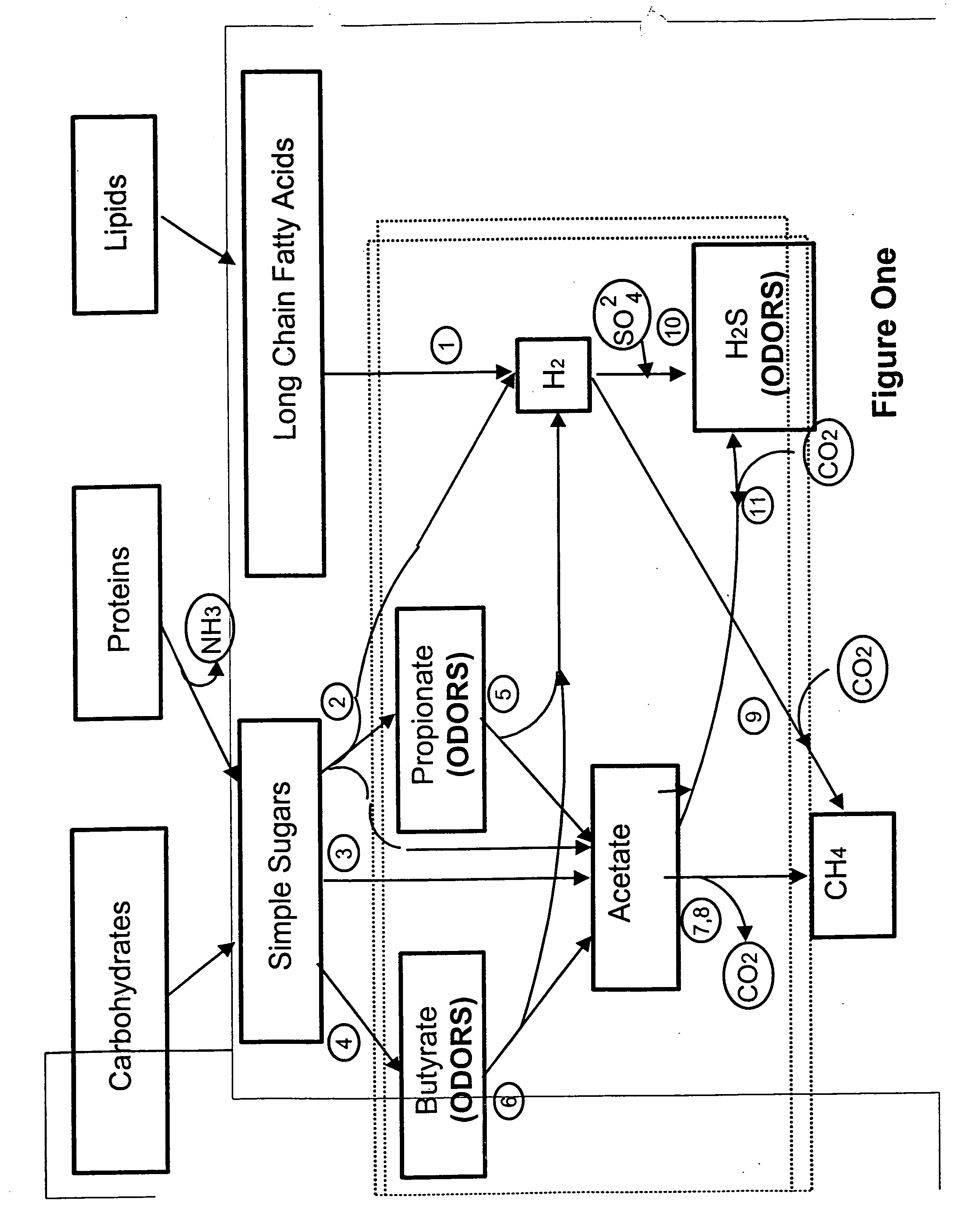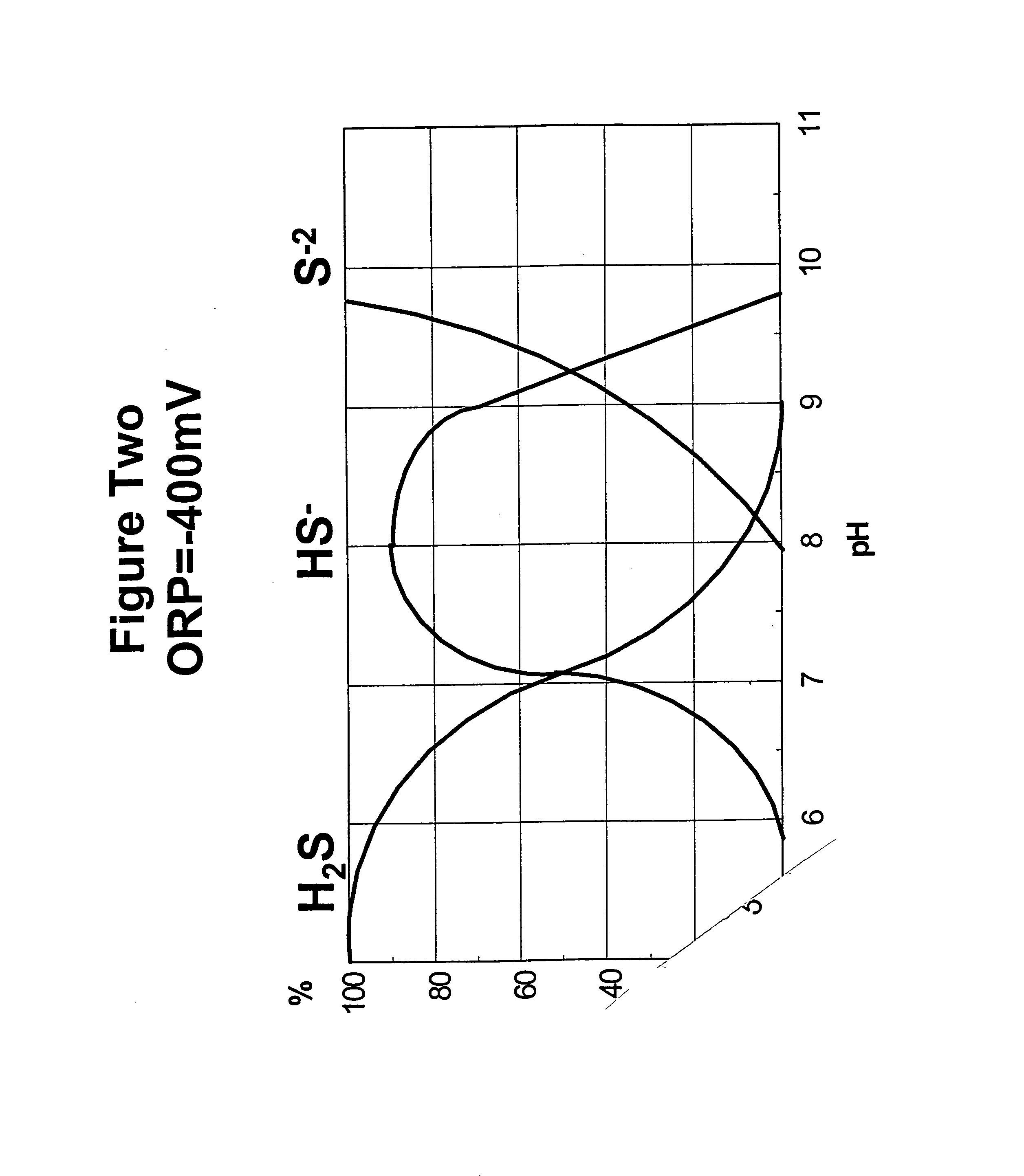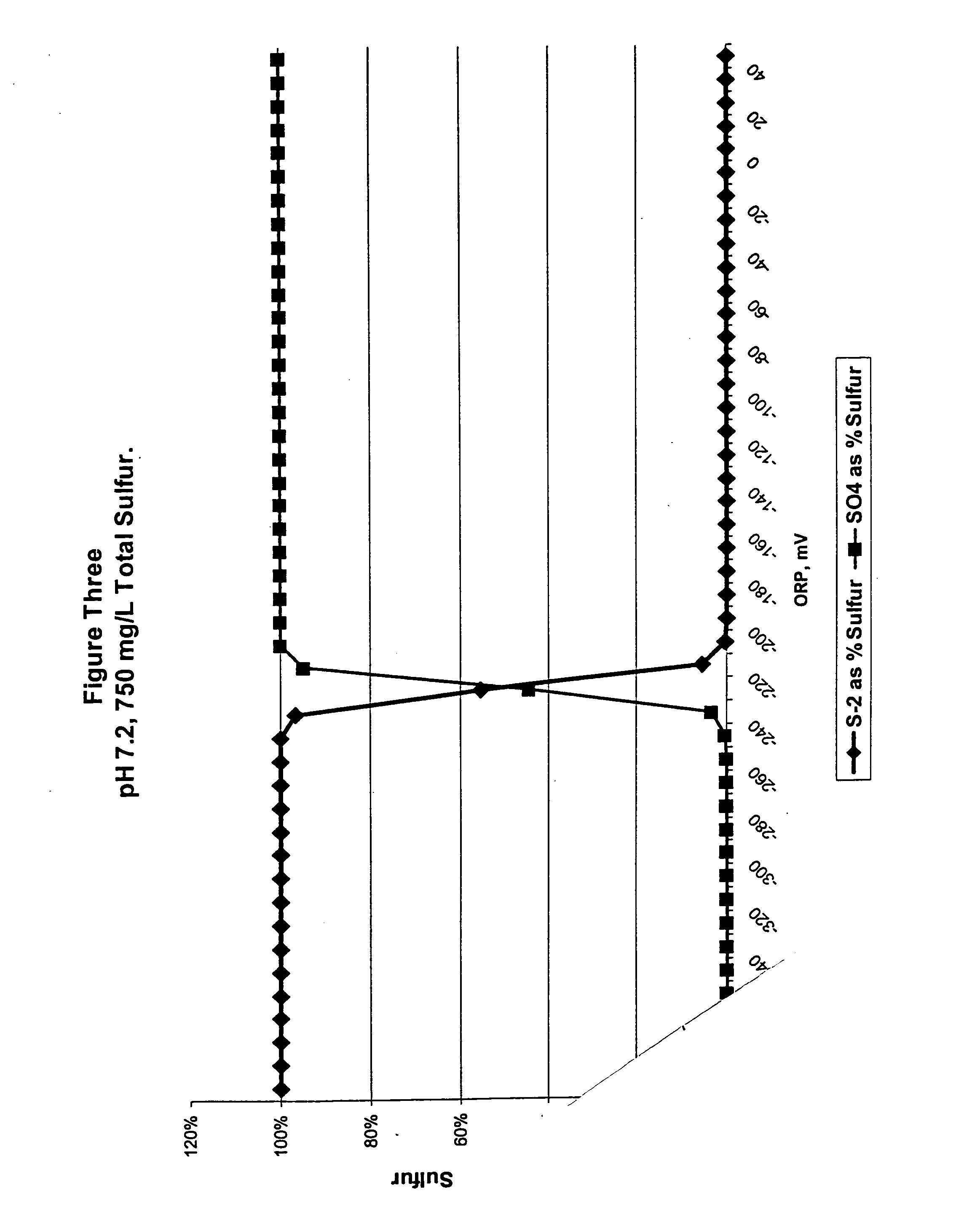Odor control
a technology of odor control and control panel, applied in the direction of water treatment parameter control, biological water/sewage treatment, disinfection, etc., can solve the problems of not solving the problem, not noticing odor, and usually very expensive measures, and achieve the effect of reducing or eliminating odors in wastewater treatment plants
- Summary
- Abstract
- Description
- Claims
- Application Information
AI Technical Summary
Benefits of technology
Problems solved by technology
Method used
Image
Examples
example ii
[0066] The invention also was tested at pulp and paper mill in Florida during the summer months. The wastewater treatment facility was set up as shown in FIG. 4. The facility consisted of four lagoons. Lagoon A covered 100 acres and contained 325 million gallons. Lagoon B covered 200 acres and contained 225 million gallons. Lagoon C covered 175 acres and contained 185 million gallons. Lagoon D covered 125 acres and contained 130 million gallons. Lagoon A is the only lagoon that was not aerated. Wastewater flowed from the mill to a primary clarifier to lagoon A to lagoon B to lagoon C to lagoon D and then it was discharged. The total retention time in the system was about 30 days. At the time of the test, lagoon A was operating at between about 30.degree. to about 40.degree. C. and historically received BOD.sub.5 loadings of about 45,000 lbs / day.
[0067] Lagoon A was experiencing odor problems which had been unsuccessfully treated with sodium hypochlorite NaOCl and liquid sodium nitrat...
PUM
| Property | Measurement | Unit |
|---|---|---|
| oxidation reduction potential | aaaaa | aaaaa |
| Oxidation Reduction Potential | aaaaa | aaaaa |
| oxidation reduction potential | aaaaa | aaaaa |
Abstract
Description
Claims
Application Information
 Login to View More
Login to View More - R&D
- Intellectual Property
- Life Sciences
- Materials
- Tech Scout
- Unparalleled Data Quality
- Higher Quality Content
- 60% Fewer Hallucinations
Browse by: Latest US Patents, China's latest patents, Technical Efficacy Thesaurus, Application Domain, Technology Topic, Popular Technical Reports.
© 2025 PatSnap. All rights reserved.Legal|Privacy policy|Modern Slavery Act Transparency Statement|Sitemap|About US| Contact US: help@patsnap.com



